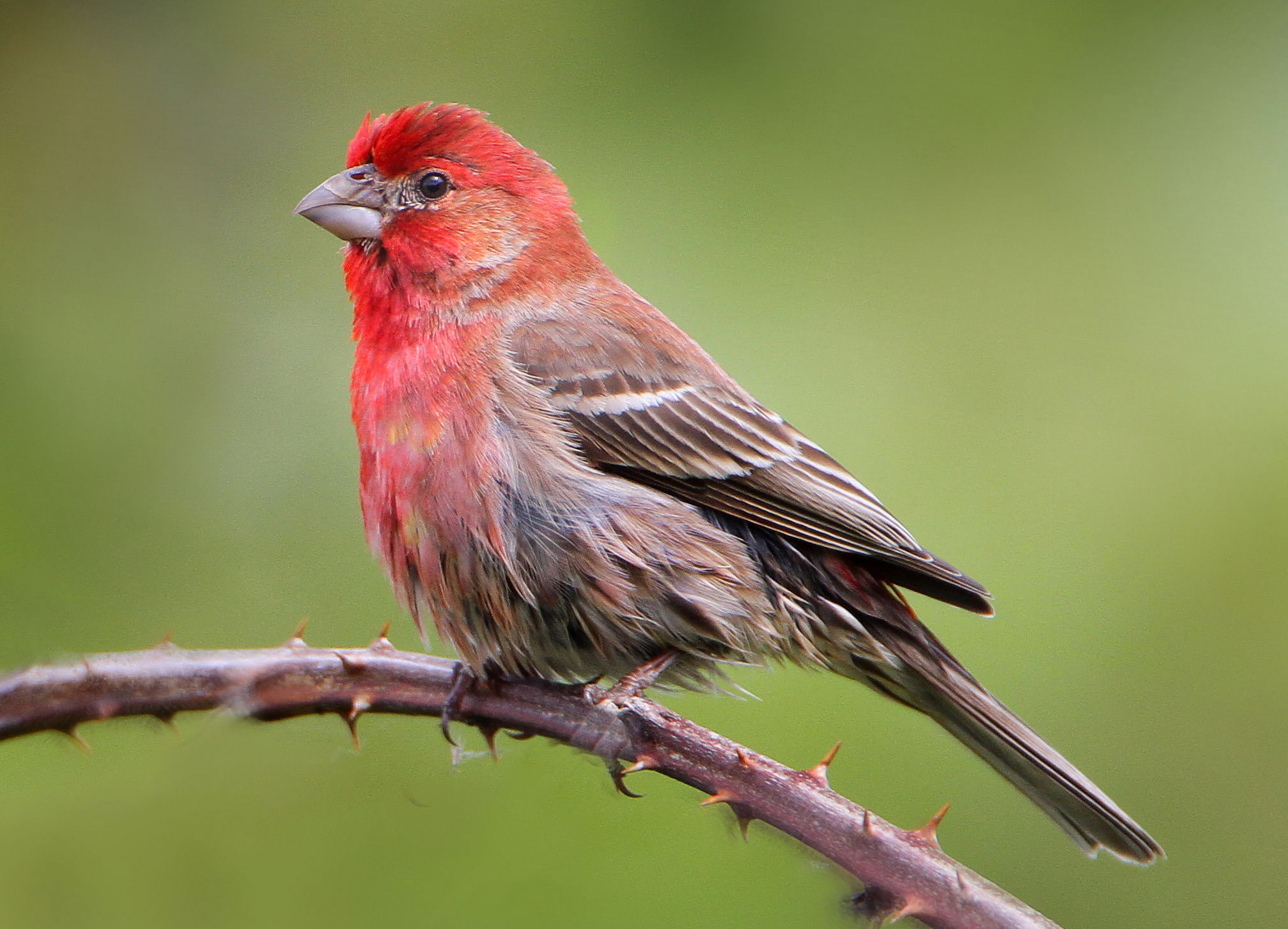The negative impacts of cigarettes, on both smokers and
those around them, are widely known. While some effects may only be cosmetic
(wrinkling, yellowing of the skin), others, such as cancer, can be fatal.
According to a team of Mexican researchers, however, cigarette smoking can be
beneficial to at least one group: urban birds. The benefit, unsurprisingly, does not come from actually smoking the cigarettes, but instead from
incorporating discarded butts into nests. There, chemical residues in the
cigarette fibers appear to act as repellents that keep parasites away from
vulnerable nestlings
(Male house sparrow, Passer domesticus. Image courtesy of Redbridge Birdwatching.)
These unusual and surprising findings, published in the
journal Biology Letters, were the
result of an undergraduate research project conducted on the campus of the
National University of Mexico in Mexico City. The project was undertaken after
researchers noted the presence of cigarette butts in nests of urban-dwelling
house finches (Carpodacus mexicanus)
and house sparrows (Passer domesticus). Similar patterns have also been reported in other species
and locations, prompting the scientists to wonder whether the inclusion of the
butts was deliberate. This seemed particularly likely given the fact that
nicotine, one of the dominant chemicals in cigarettes, is known to repel
ectoparasites—parasites that live on the surface of the body. In fact, both
poultry and rabbit farmers use nicotine as an organic method of parasite
control.
To investigate whether the urban birds had also begun to
employ nicotine as a pesticide, the researchers performed both experimental and
observational work. For the experimental portion of the study, nests of both
species were located and fitted with thermal traps designed to attract
ectoparasites by mimicking the heat signatures of potential hosts. Cellulose
cigarette fibers—from either smoked or unsmoked cigarettes—were attached to the
heating component of each nest, and a strip of adhesive was placed next to the
heaters in order to capture all approaching parasites. The researchers hypothesized that they would find fewer
parasites near the heaters fitted with smoked cigarette fibers, since these
materials contained a higher proportion of pesticidal chemicals. Indeed, they
found that parasites were not only more scarce at these nicotine-treated sites,
but, in some cases, were nearly 6 times less likely to appear.
(House finch, Carpodacus mexicanus. Image courtesy of Wikimedia.)
Once the experiments were complete, the research team waited
until the birds had finished breeding and then returned to harvest the empty
nests. These were weighed and then dissected; each nest’s cellulose content was
measured, and all ectoparasites were counted and identified. Assuming that
cigarette butts act as a repellent, the scientists expected to find fewer
parasites in nests with more butts. The majority of nests of both house sparrows and house
finches contained bits of discarded cigarettes. Interestingly, while butts were
more likely to be found in nests of the former (89% vs. 86%), they were found
in higher quantities in nests of the latter (an average of 10 vs. 8 per nest).
Both species suffered from similar rates of parasite infestation, and, as
predicted, parasite abundance was negatively related to the presence of cigarette
fibers.
The results indicate that the nicotine-laced cellulose deters
parasites—and, further, suggest that the birds may be selecting these building
materials on purpose. You might think that would require a bit more
thoughtfulness than is possessed by the average songbird, but this is not the
first time they have shown such an ability. Several other species, including
both European starlings (Sturnus vulgaris)
and tree swallows (Tachycineta bicolor),
are known to deliberately incorporate green plant materials into their nests; like
cigarettes, these botanical building blocks contain compounds that repel
parasites.
Thus, the use of the cigarette butts appears to be “an urban
manifestation of a pre-existing behavior”—or, to quote the title of the paper
in which these results were presented, the use of “new ingredients for an old
recipe.” The sparrows and finches appear to be using the recipe to
“self-medicate,” though for this to be proven definitively, further work will
be required. Specifically, while it is clear that the cigarette butts reduce
the likelihood of parasite infestation, it is still necessary to show that the
birds are purposely selecting these items for inclusion in their nests, and
that use of the butts improves the birds’ reproductive success.
The research team has suggested several additional studies
that could help them identify whether the cellulose might serve another purpose
(such as providing insulation) and also whether the toxic residues in the
fibers might have negative effects on nestlings. These data will reveal
whether—in the case of birds, at least—cigarettes can sometimes do more good
than harm.
---
Suarez-Rodriguez, M., Lopez-Rull, I., and Garcia, M.C. 2013. Incorporation of cigarette butts into nests reduces nest ectoparasite load in urban birds: new ingredients for an old recipe? Biology Letters 9(1): online advance publication.
You can also find Anthrophysis on Facebook and Pinterest, or follow Caitlin (the "Anthrophysist") on Twitter.



Because electronic cigarettes competed successfully with tobacco cigarettes and drove their sales down.http://www.herbtools.com/
ReplyDeleteGood post :)
ReplyDeleteVisit my website: NicotineResources
Vapormex is a Mexican online store that offers products related to the whole subject of electronic cigars, also known as the vapeo culture. In our inventory you will find products that satisfy the tastes and needs of the beginner, intermediate and advanced vapeador cigarros electronicos
ReplyDelete